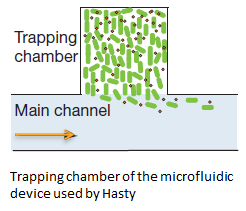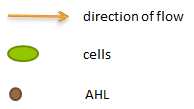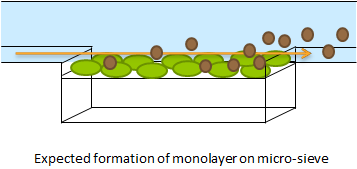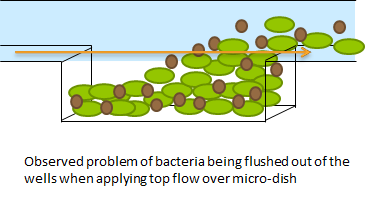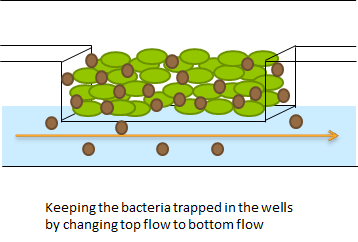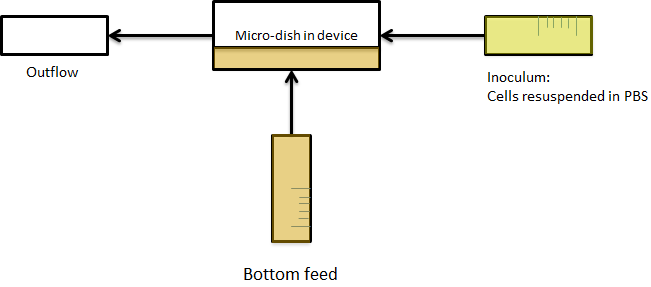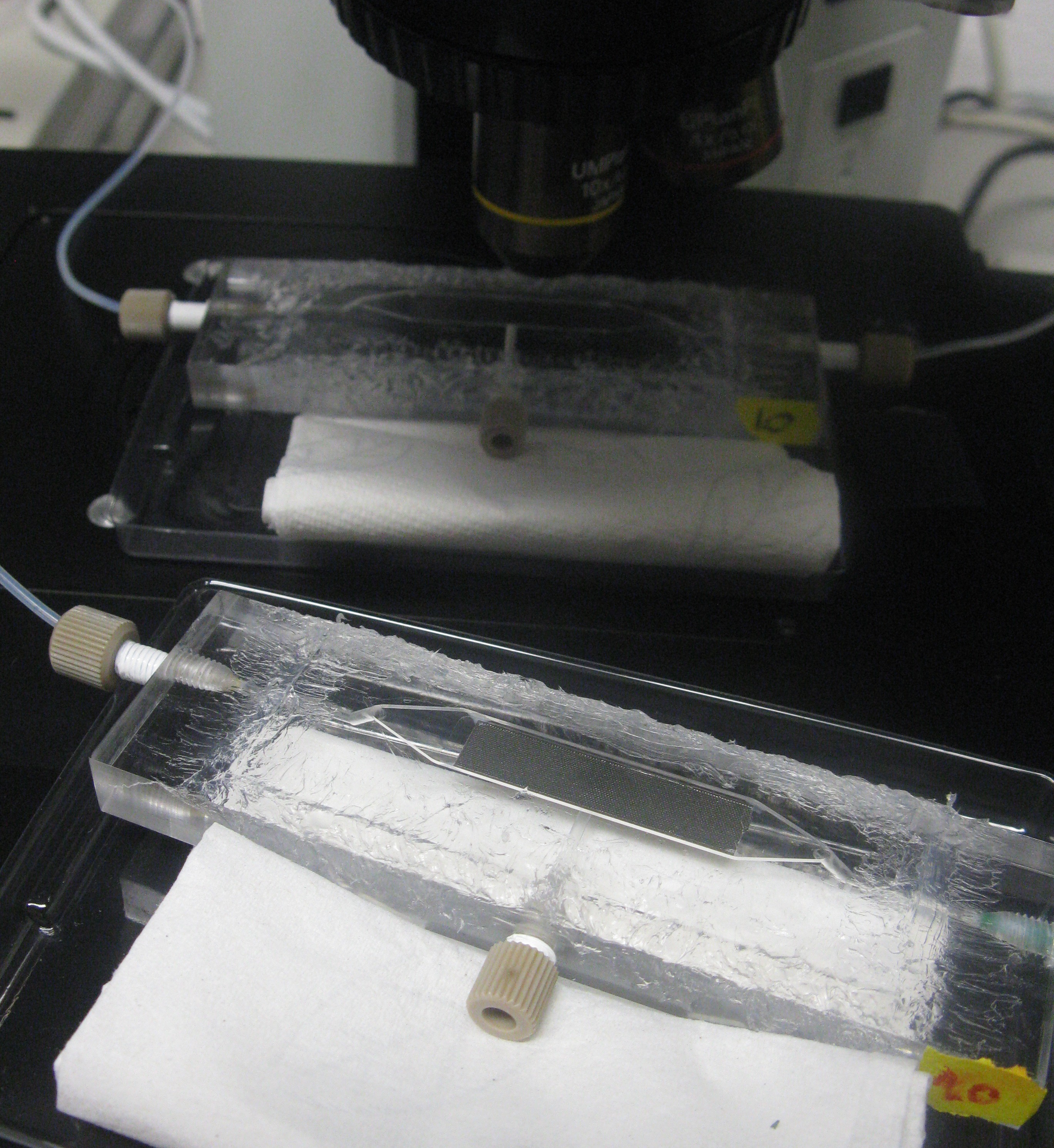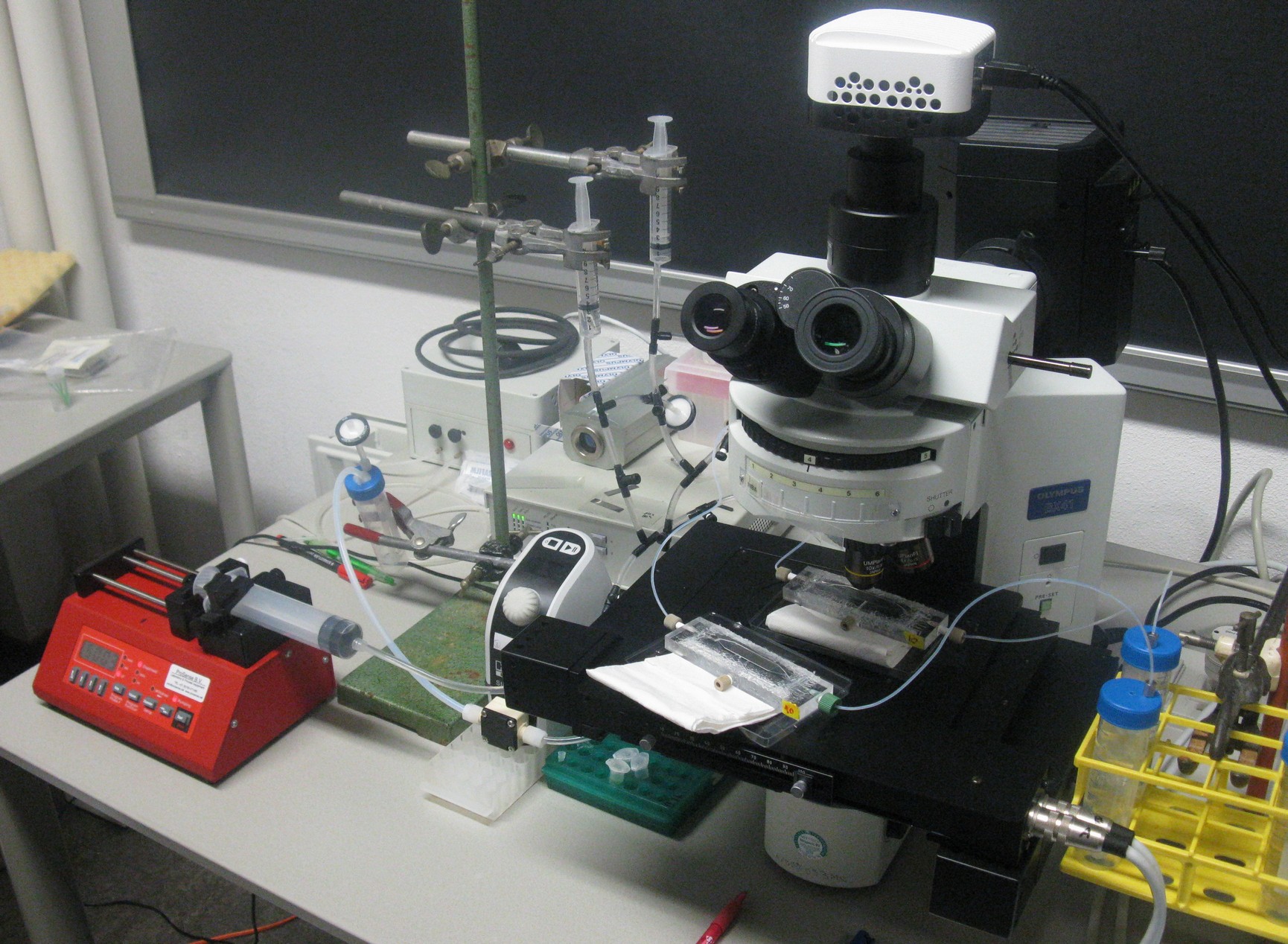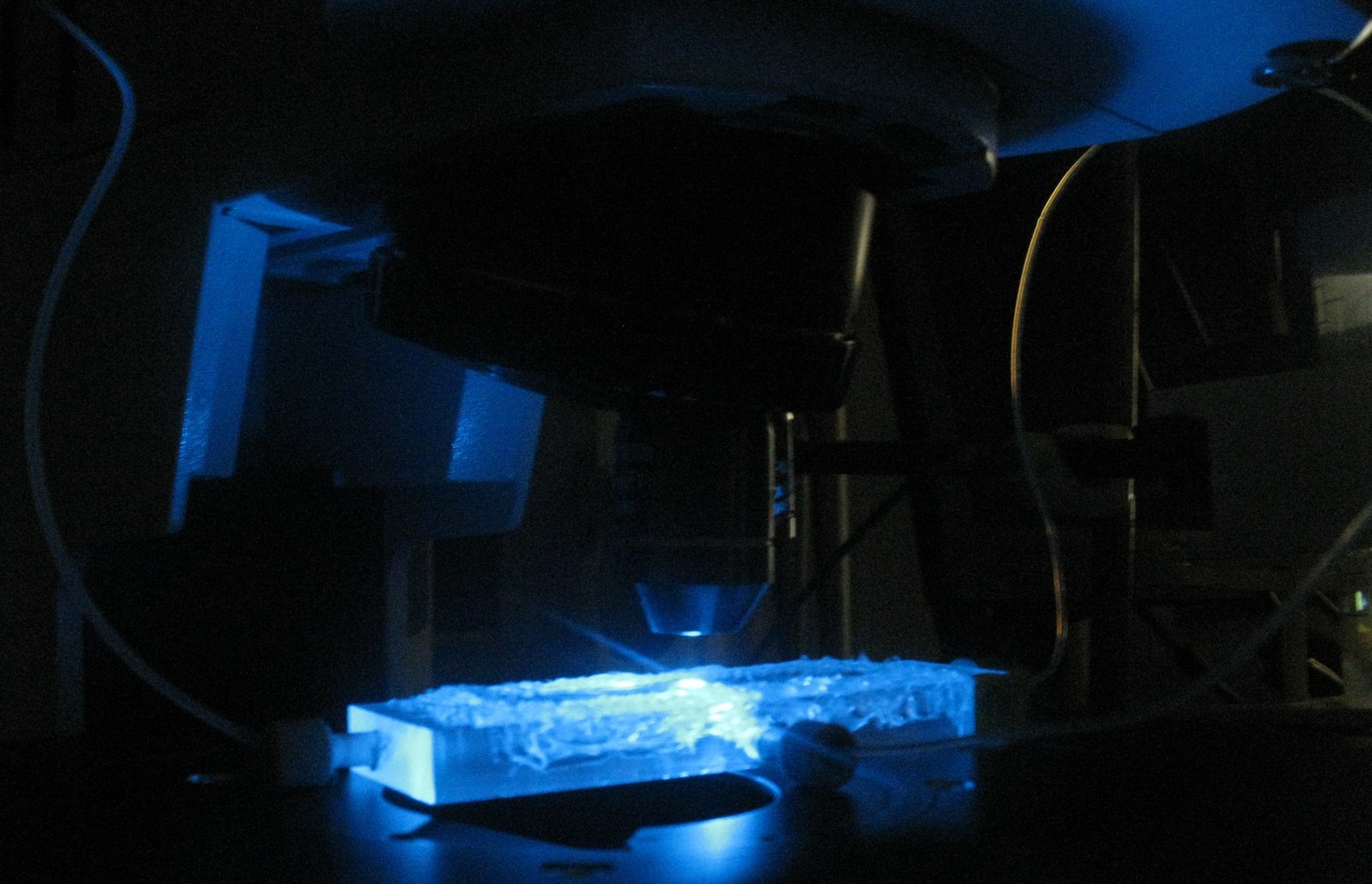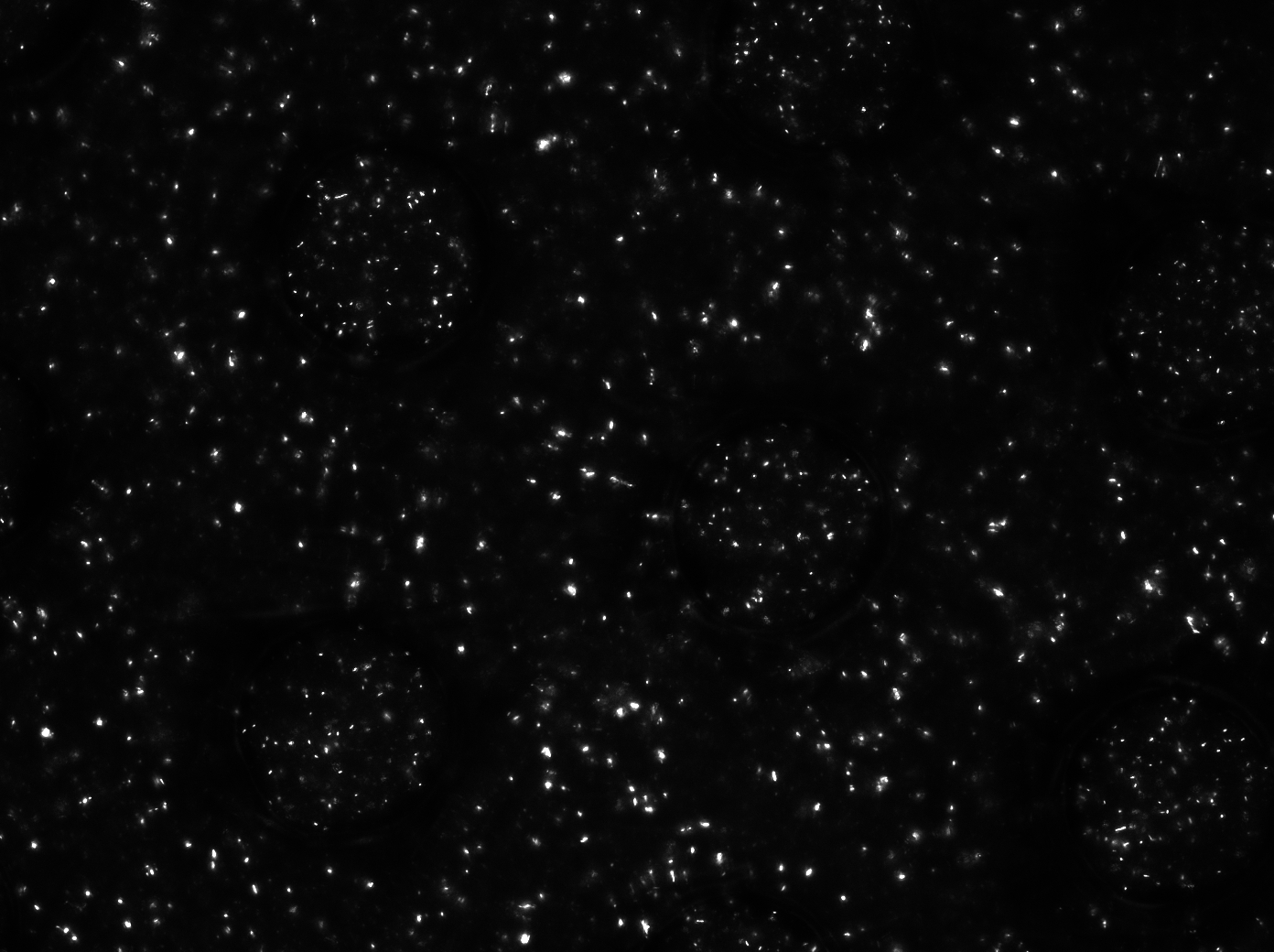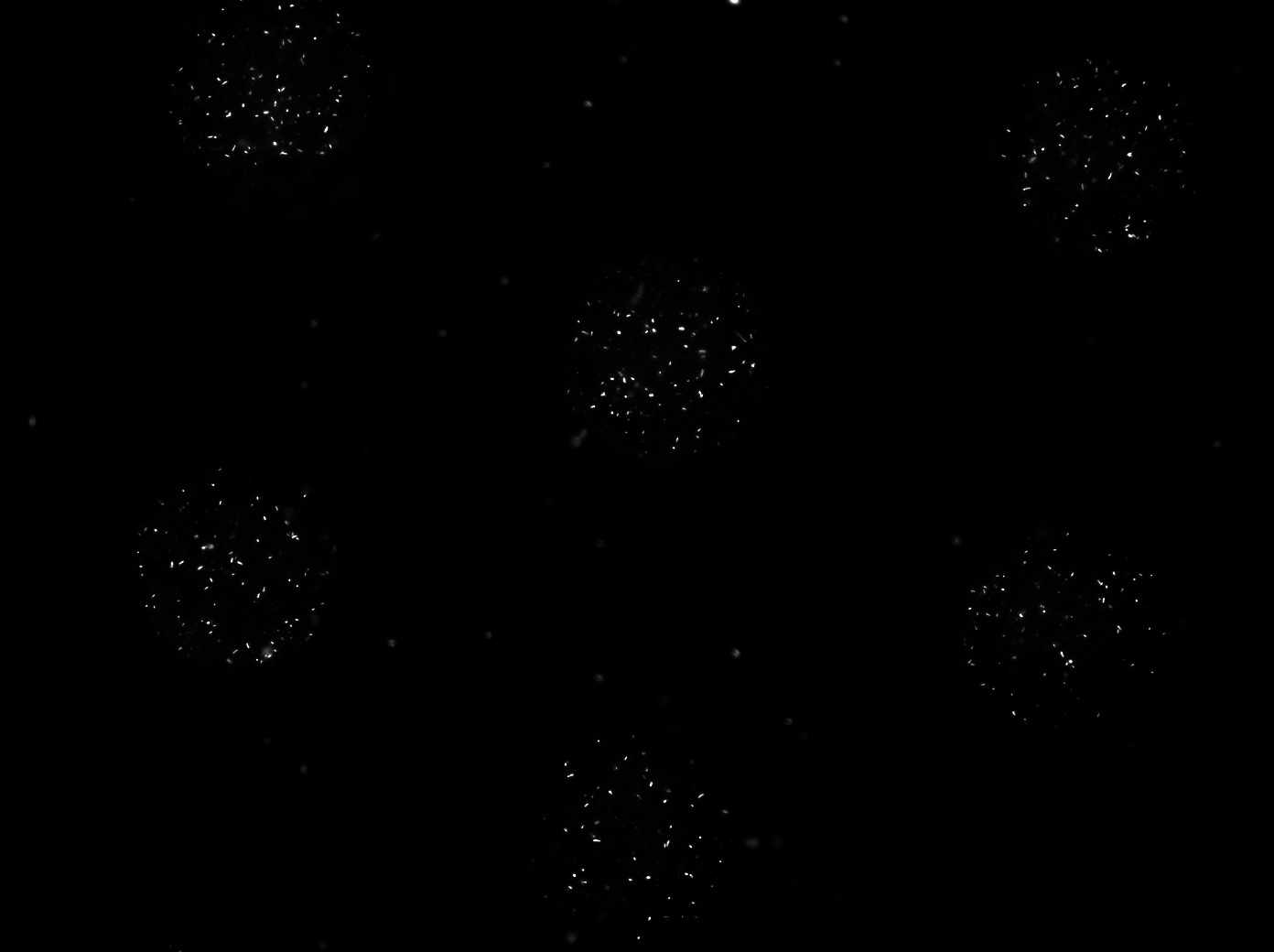Team:Wageningen UR/Project/DevicesSetup
From 2011.igem.org
(→Custom fluidic device designed by Team Wageningen UR to measure oscillations) |
(→Custom fluidic device designed by Team Wageningen UR to measure oscillations) |
||
| Line 49: | Line 49: | ||
Because it is not necessary for our system to have a flow going over the wells we eventually only used bottom flow, as depicted in figure 5. Our resulting setup enabled us to bottom feed our bacteria, this is depicted in figure 6. This allowed the measurements to be taken continuously for various hours, as nutrients could diffuse through the bottom of the wells. Measurements were taken with the use of our LEGO robot (see [https://2011.igem.org/Team:Wageningen_UR/Project/DevicesFunFacts fun facts]). | Because it is not necessary for our system to have a flow going over the wells we eventually only used bottom flow, as depicted in figure 5. Our resulting setup enabled us to bottom feed our bacteria, this is depicted in figure 6. This allowed the measurements to be taken continuously for various hours, as nutrients could diffuse through the bottom of the wells. Measurements were taken with the use of our LEGO robot (see [https://2011.igem.org/Team:Wageningen_UR/Project/DevicesFunFacts fun facts]). | ||
| - | [[File:Micro-dish2_device_WUR.png| | + | [[File:Micro-dish2_device_WUR.png|270px]] [[File:Bottom_feed_WUR.png|470px|right]] |
| - | '''Fig.5 (Top)''' | + | '''Fig.5 (Top)''' ''Using microdish with bottom flow'' |
'''Fig.6 (Right)''' ''Applying bottom feeding to keep the cells in the wells alive'' | '''Fig.6 (Right)''' ''Applying bottom feeding to keep the cells in the wells alive'' | ||
| Line 85: | Line 85: | ||
[[File:Measuring_GFP_WUR.jpg|500px|center]] | [[File:Measuring_GFP_WUR.jpg|500px|center]] | ||
| - | + | ||
For the experiments, an overnight culture of the cells containing our construct was spun down and resuspended in PBS. The resuspended culture was inoculated in the device and left in the chamber to settle down for a while. Since the bacteria were bottom fed with LB as seen in the setup section in [[Team:Wageningen_UR/Project/DevicesSetup#Controlling_cell_growth| figure 6]], only the bacteria which settled down in the wells survived, while the bacteria in PBS starved to death. This is shown in the short video below. The pictures were taken every ten minutes. | For the experiments, an overnight culture of the cells containing our construct was spun down and resuspended in PBS. The resuspended culture was inoculated in the device and left in the chamber to settle down for a while. Since the bacteria were bottom fed with LB as seen in the setup section in [[Team:Wageningen_UR/Project/DevicesSetup#Controlling_cell_growth| figure 6]], only the bacteria which settled down in the wells survived, while the bacteria in PBS starved to death. This is shown in the short video below. The pictures were taken every ten minutes. | ||
| Line 98: | Line 98: | ||
| - | '''Fig. | + | '''Fig.9''' ''Microdish with ptetGFP inoculum in PBS (left) and cells in wells after removal of the PBS (right)'' |
Revision as of 23:51, 21 September 2011
 "
"



